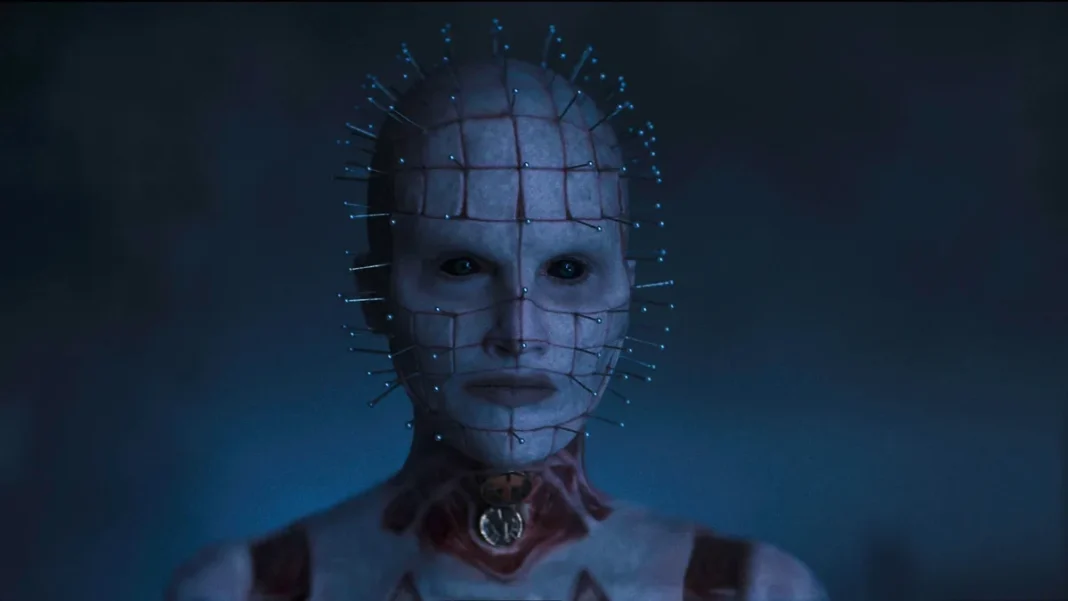Each blood and gore flick is about torment, yet just the “Hellraiser” series is about sadomasochism — the power and anguish of it, its higher calling. “Hellraiser,” a reboot of the establishment that started in 1987 and has given us nine spin-offs (time passes quickly while you’re having a good time envisioning yourself being tormented for the sake of entertainment), is a film that praises the intrusive pull of Clive Barker’s 1986 novella “The Hellbound Heart.” Yet it requires a long investment for the new “Hellraiser” to get to lovers of the series’ idea of the great stuff. At the point when it does, be that as it may, the film let it all out. Tissue gets torn and excoriated, tissue gets stripped and cut, tissue gets parted totally open with mysterious mechanical gadgets of obtrusive fear. The film’s severe last venture might help you to remember such nauseous milestones of artistic mutilation as “Tryout,” “The Cell,” the “Saw” series, the 2018 revamp of “Suspiria,” and David Cronenberg’s new re-visitation of body loathsomeness “Violations Representing things to come.”
However even before it arrives at that under-the-skin-I’m-in peak, the new “Hellraiser” could be viewed as one of the more unreasonable dismay films in ongoing memory. It’s a stroll on-the-wild-side blood and gore flick that is being delivered by Disney, and assuming you’re considering how Disney — aside from the way that they own beginning and end in sight, including Hulu, the stage that is streaming “Hellraiser” — would now connect its image with a repulsiveness series gave to the horrible urging of outré sexuality, the response is: “Hellraiser,” for a large portion of its two-hour running time, really feels similar to a Disney film… aside from those minutes when it appears to have been taken over by the soul of the Marquis de Sade.
What denotes the characters — Riley (Odessa A’zion), who resembles a defiant lit major, in addition to her nitwit sweetheart Trevor (Drew Starkey), her overprotective sibling Matt (Brandon Flynn), and his beau Colin (Adam Faison) — as “Disney characters” is that they have none of the secret edges or curlicues of the characters in, say, “Bodies Bodies.” They’re youth-film figures with basically no natural interest; they’re pretty much as boring as the legends of a “Scooby-Doo” film. For an hour or thereabouts, as it’s setting things up, “Hellraiser” is near lethal. The characters truly are simply strolling meat-in-pausing. The film might have been classified “Bodies Bodies (with Chain Snares).”
Of course, the “Hellraiser” films never were worth very much on that score. Pinhead, the series’ grave S&M instigator/dilettante/master (that white bare top of his, with its chessboard lines and impeccably requested columns of pins, resembles a craftsmanship establishment), became, over the long run, an unusual Freddy Krueger figure, an unholy mascot of megaplex dread. In any case, who recollects, or thought often about, individuals he tainted with his infection of delight torment?
In the new “Hellraiser,” Pinhead — all the more appropriately alluded to as the Hellfire Minister — shows up with the Cenobites, a group of individual phantom evil presences who loan new importance to the expression “uncovered body parts” (one has a spine exposed as though someone were carrying out procedure on it). One of the Cenobites walks around like a space-outsider geisha, one resembles a robot with the Sister’s rictus-smile jaws, and one looks like a Francis Bacon representation of a mouth frozen open in mid-shout. Concerning Pinhead, he’s been reconfigured as a delicate unpleasant doll form of himself, with star-kid eyes and a voice of physically questionable velvet. That the Damnation Minister is currently played by an entertainer, Jamie Clayton, takes the film, here and there, nearer to the soul of Barker’s book. However as Pinhead and his kindred phantoms creep around, the film transforms them into such a valuable arrangement of animal mascots that I half-expected to hear somebody say, “Gather every one of the five.”
The film halts abruptly at whatever point they aren’t on screen, as the main plot is by all accounts Riley’s craving to get her sibling back after he’s retained into the enormous painsphere. Trevor, who might realize more than he lets on, makes statements like, “How could you inspire it to change, as from the block into that?” He’s talking, obviously, about Lemarchand’s Container, the engraved mechanical riddle box that has forever been the insignia of the “Hellraiser” series — it opens torment from joy, driving your spirit into another world. In “Hellraiser,” even the precarious planned operations of the case are, as it were, a similitude. It gets going as an old block that, assuming that you click the right handles and twist the right corners, uncovered and improves its secret parts, so, all in all it’s as of now not square. Simply how you’re at this point not square once you get a preference for kicks that have been curved into illegal shapes.
The new “Hellraiser” functions as analogy, as tissue obliterating scene. However it doesn’t function as a story. What’s more, perhaps that is on the grounds that there’s presently something very dated about the film’s vision of torment freak erotic nature as a one-way pass to the hellfire. The film needs to take you through the ringer, however nowadays that sounds like something you’d track down on a connect application.








